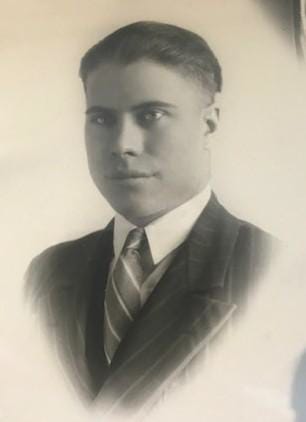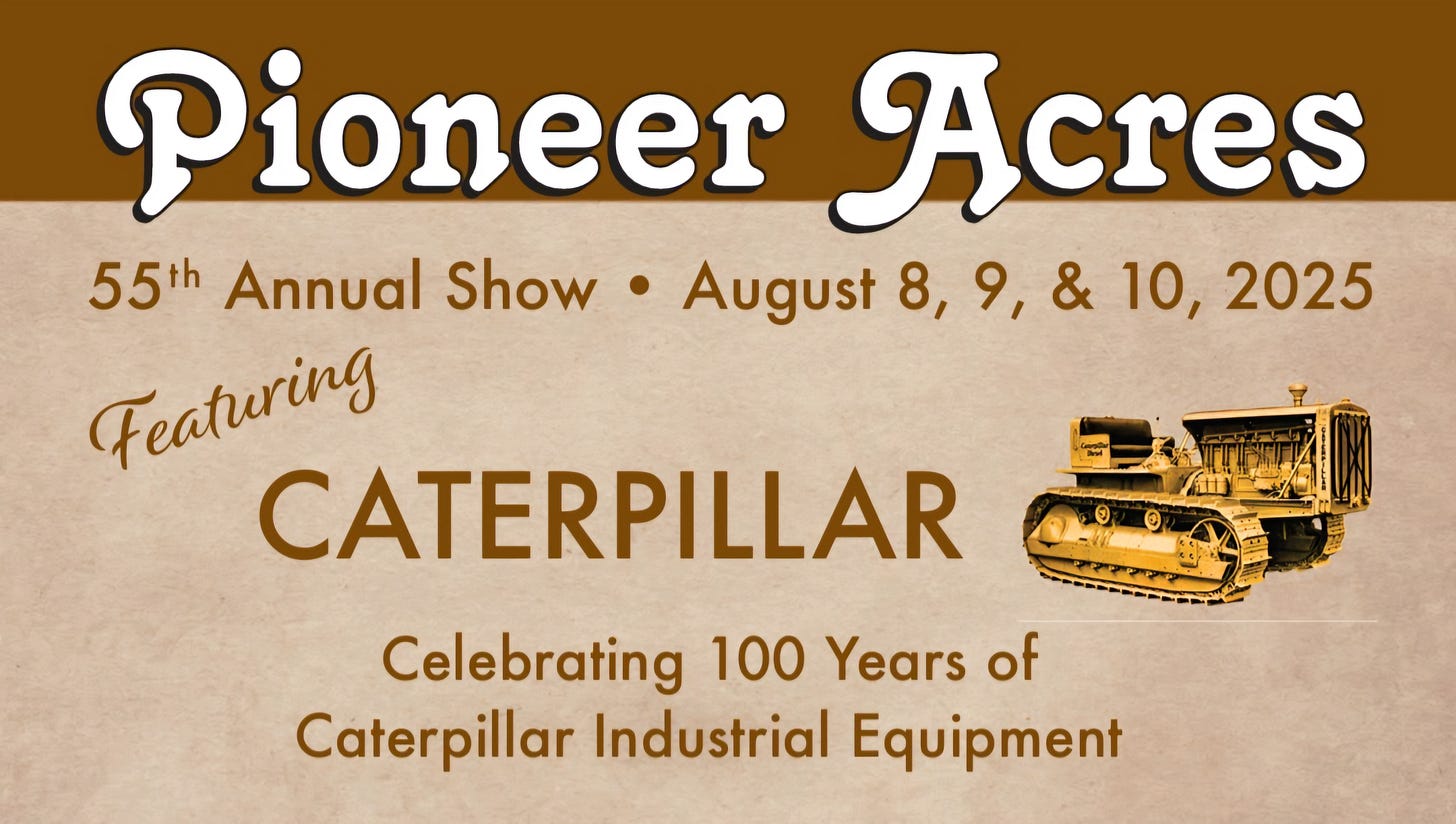Massey-Harris was a brand with hometown advantage – at least, if you consider home to be Newcastle, Ontario, approximately 3,500 kilometres away from Calgary. Massey Manufacturing Co. was a blacksmith business founded in 1847. In 1891 it joined forces with A. Harris, Son and Company, creating the iconic Massey-Harris (M-H) label. Early featured products included standard agricultural equipment such as plows, harrows, cultivators, rollers and mechanical threshers. They also offered a unique product – safety bicycles.
The Canadian company was destined to become a behemoth, a national and international business with a worldwide reach. This included a huge footprint in the United States and Europe. The company also had a deep political and cultural impact on Canada. Vincent Massey (1887 – 1967) was the first Canadian-born Governor General of Canada while the famed artist Lawren Harris (1885 – 1970) was a member of the Canadian art collective The Group of Seven.
In Calgary, M-H opened their first location on 9th Avenue in 1903. It sold everything from milking machines to stationary engines. Calgary was passed over for the province’s first university and as the provincial capital, but it was selected for something arguably more important to its survival because of its prime location on the Canadian Pacific Railway (CPR). The Vancouver-Winnipeg leg arrived in 1883 and the Fort Macleod to Edmonton track was completed in 1892. It transformed Calgary into a significant distribution point for agricultural equipment and innumerable other goods.
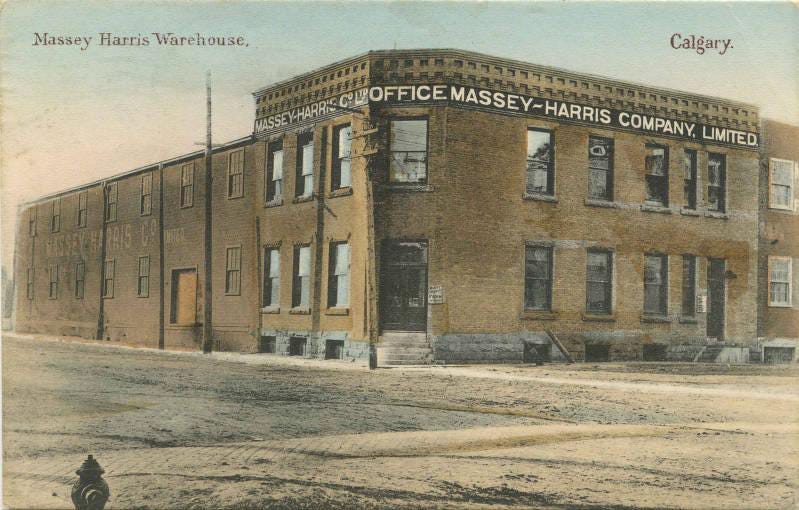
In 1912, M-H relocated to 318 – 11th Avenue SE. That Edwardian commercial four-storey building is still standing in the present-day Beltline district, and it is a good example of “Age of Optimism” architecture, incorporating wide display windows on the first floor. Even better, the new location had access to a CPR spur, and any prominent warehouse required access to those rail spurs. The location included a corporate element as well.

Like M-H, Torrey Ellis was originally an Ontario product. Born in 1902, Torrey moved to Alberta from Hulbert, Ontario with his family in 1912.
The Ellises settled in the Chestermere area east of Calgary. Their first tractor was a formidable 28-50 Hart Parr. Although it travelled at a glacial pace, people who operated it never forgot the “teeth-shattering” crash when its solid steel wheels encountered a rock.1
Farming in the 1920s also meant that field work was done extensively with horses. The Ellises farmed with Percherons.
The Percherons did not like the Hart Parr.
Each spring brought misadventures as they were hitched to noisy farm equipment for the first time. A frightened animal flying into the farmyard mid-morning wearing nothing but a collar was not an uncommon occurrence, and repairing harnesses was a never-ending chore.2 Harvest season opened with the terrified horses side-eyeing the deafening tractor and threshing machine, but it usually ended with them dozing companionably beside them while the wagons they pulled were unloaded.
Torrey farmed at home until 1928, but that year he got a job working for Massey-Harris in Calgary.3 Torrey’s years with M-H covered a period of profound change for agriculture, a transformation that his own family had been navigating as horses worked alongside the technology that was destined to replace them. Farm equipment dealers offered products for customers who needed a harness that had a foal attachment so that young horses could be hitched beside their mothers. In the same show room, other customers were lingering beside the shiny new combines.

And combines were a popular M-H product, although when the Second World War broke out, a political dimension was introduced. The Ellis family had already experienced the impact of war; Torrey’s brother Haddon had been killed in France in 1917. Now the world was drawn into another conflict, and there were implications for farm equipment retailers. M-H had been tinkering with self-propelled combines for years, and they received a large ration of steel to continue developing their product. Self-propelled equipment used less steel than pull-type competitors, and as farm laborers left to join the armed forces, replacing that workforce with mechanized labor became a priority for the Canadian and American governments.
The M-H Model 21 Combine was ready to go by 1940, and in 1944, the Massey-Harris “Harvest Brigade” of five hundred No. 21 combines travelled 1,500 miles through the United States to the Gulf of Mexico and back to the Canadian border. It was a publicity technique that would be well suited to YouTube and TikTok. In the 1940s it meant considerable newspaper coverage. The impressed reporting also saluted the tanks that M-H had built that were populating the battlefields in Europe and in the Pacific.
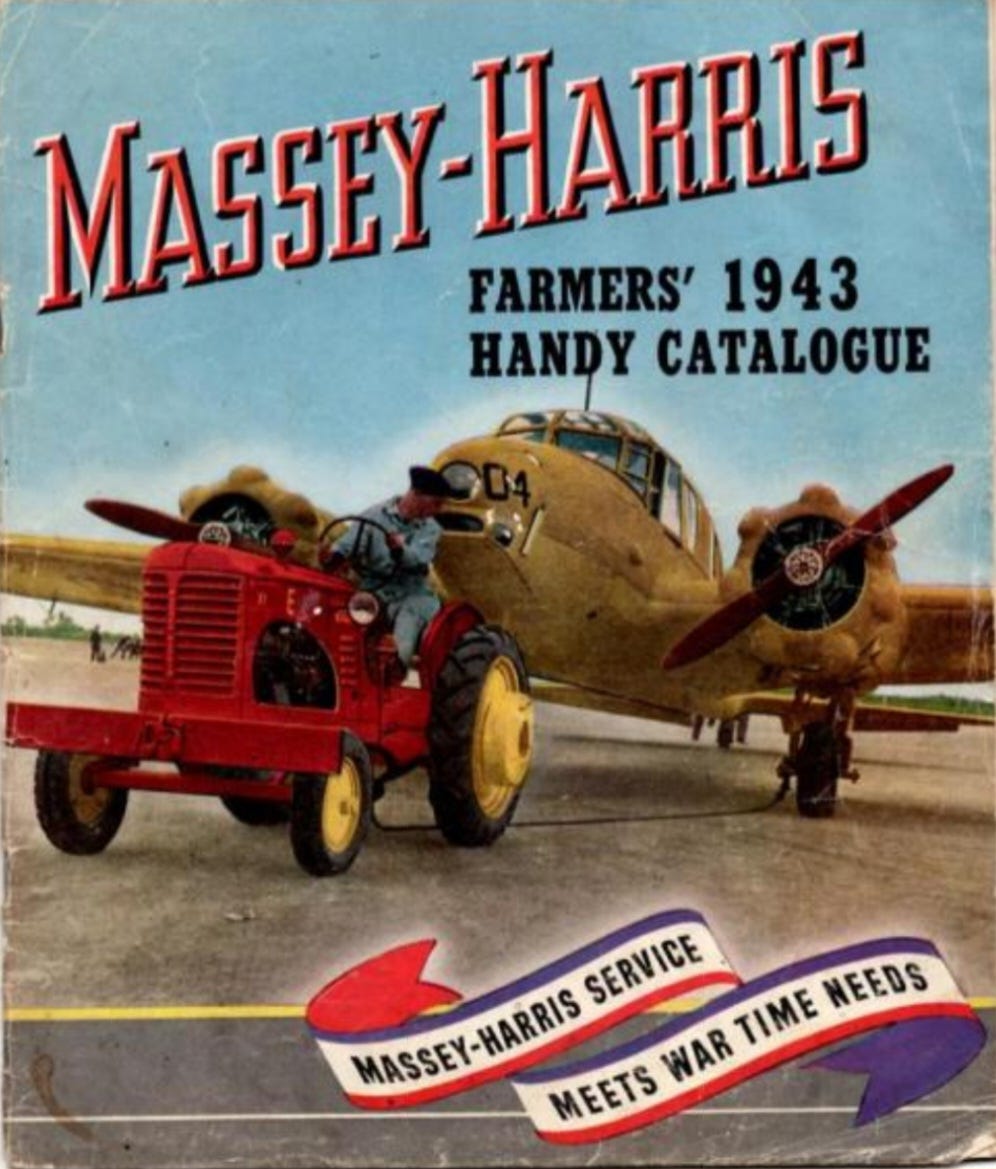
The war years also found M-H partnering with the Royal Canadian Air Force (RCAF). In the Calgary area alone the RCAF had relief landing fields, wireless schools, flying schools and other training facilities at Airdrie, Shepherd and Calgary. Available from 1941, the MH-81 was a little tractor available in two versions: as a row crop tractor, or in a standard-tread model. The RCAF bought “Standards”, painted dark blue, for towing work on their airfields.
Torrey was managing the Calgary M-H location during those years. He was also a prominent member of The Alberta Implement Retailers Association. That story is more extensively covered here, but it saw employees from a variety of agricultural brands teaming up to address issues that impacted everybody. Topics included farm safety, ethical pricing of equipment and soil health. In addition to professional development, the meetings offered social opportunities and networking. Torrey was extensively involved and served as the vice president of the association. He was honoured with an honorary life membership in 1950.4
Torrey’s life had been influenced by agriculture in significant ways, but his true passions ran in another direction. He was a tractor equipment dealer by day, but! A football player by night! And for the beginning of that story, we must go back to a time earlier in his life, when he and his father were working in their field in 1924. Shepherd Ellis noticed that three men were walking around on their farm without having asked permission. Shepherd and Torrey went to investigate and were informed that the three men were electricians and had some work to do on the property. Apparently, something about the situation rubbed Shepherd the wrong way because he told his son to throw those three men off his land! Torrey was also known as “Brick” Ellis and he played football for the Calgary Tigers, the precursor to the Calgary Stampeders. Torrey did indeed remove those three lousy Saskatchewan Roughrider fans from the property … or maybe they were just three guys trying to do their job…………. The day’s events elicited a court date. The judge agreed that Shepherd and Torrey had been within their rights to remove the trespassers but ruled that the force used had been excessive. Torrey was fined one dollar.5
Torrey would play football for Calgary for twenty years. It was not quite long enough for the team to officially become the Stampeders (1945) or to play in the very first Grey Cup Championship, which followed an undefeated 1948 season. By then, Brick was a member of the team’s alumni. Before 1948, the Grey Cup had been an important football game, but the Calgary Stampeders and their fans and supporters made it into the festival and celebration that we know today. The Calgarians brought a taste of Calgary all the way east for their first Grey Cup appearance. This included the Grey Cup train, carrying the team and their fans eastward, a weekend of parties, and of course a pancake breakfast. No one knows if a horse was really ridden into the Royal York Hotel in Toronto for that first Grey Cup appearance but riding a horse into the fanciest hotel in town remains a Calgary Stampeders Grey Cup tradition to this day.
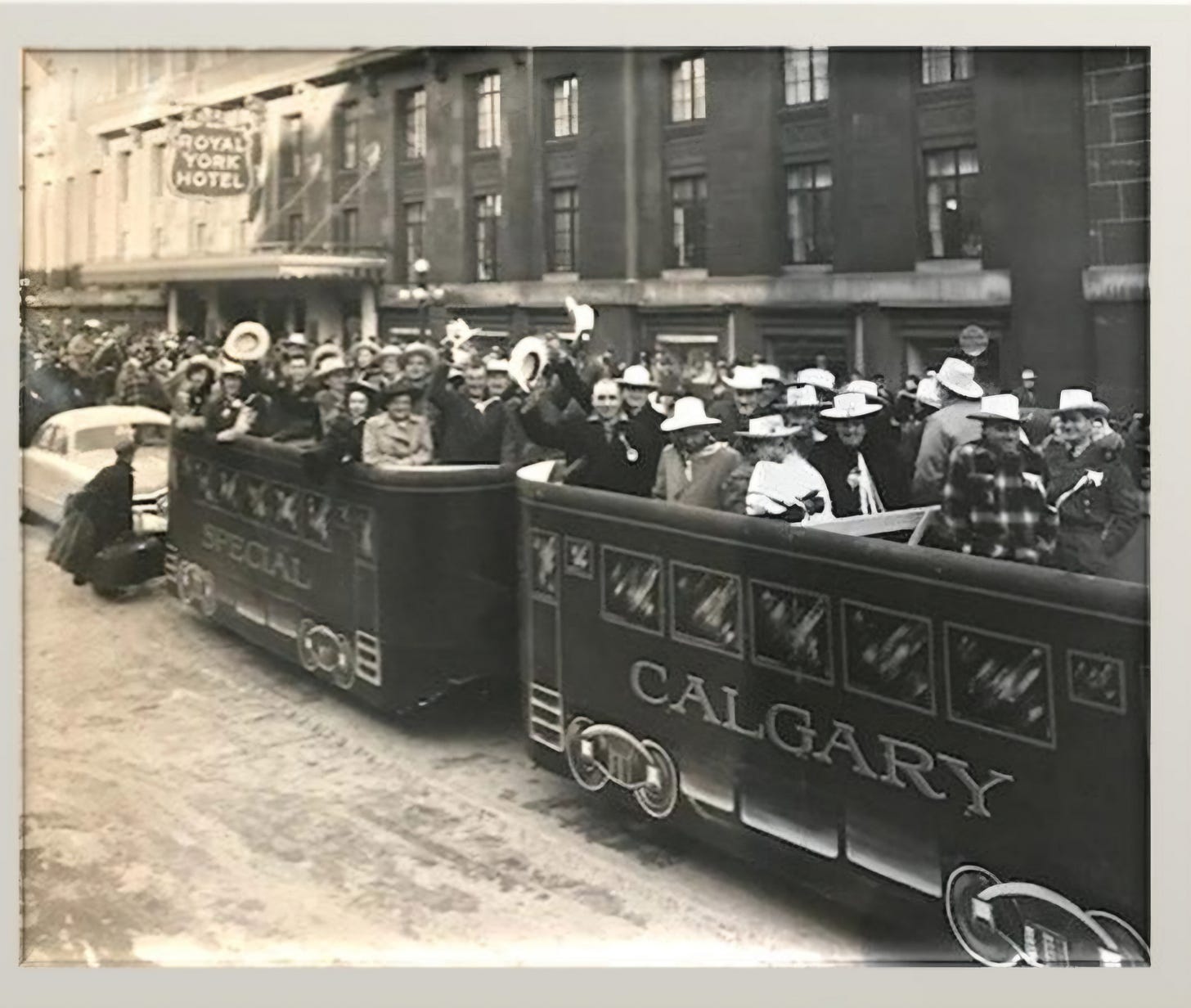
On November 27, 1948, the Stampeders won their first championship by a score of 12 – 7 over the Ottawa Rough Riders. The “Victory Special” Grey Cup train pulled into Calgary at noon on December 1, which had been declared a holiday. The triumphant parade included the Grey Cup being strapped into a jeep that had been customized with a saddle. In a city of 100,000 people, 30,000 turned out to welcome their Grey Cup Champions. Torrey and his wife Myrtle were among the faithful who traveled by train to support their team; Torrey participated in the planning and organizing of the Grey Cup train and party.
Torrey created a personal scrapbook documenting his playing career and other highlights related to football. He also wore a Calgary Stampeders alumni leather jacket that would have had serious value to a collector today had he not worn it until it fell to pieces.
Since this project looking into the lives of farm equipment dealers began, it has been interesting to learn about the parts of their lives that mattered the most to them. Their work was influential, and they were typically dedicated to their businesses and customers, but when asked about their lives, they often spoke about other things. Torrey Ellis had become synonymous with the Calgary M-H location, as advertising from his time there reveals. But the record he created of his own life focused on football. His twenty-eight years with M-H was a part of the story, but not the whole thing.
Calgary is now a major urban centre. While agriculture was a foundational part of the city, the businesses that support it have largely relocated. It is difficult to imagine a yard full of augers, fencing equipment and enormous tractors in the lot where the Massey-Harris Co. building is today. Massey-Ferguson vacated the premises in 1970. As of 2025, that building hosts a law office, an engineering firm and a not-for-profit organization. M-H itself became Massey-Harris-Ferguson Ltd. after a merger in 1953; the Harris was dropped in 1957, creating Massey Ferguson. In 1993, the business was purchased by AGCO Company of Atlanta, Georgia.
Today, there are AGCO locations in Olds and High River.
Farming Recollections, Saddles, Sleighs and Sadirons, p. 220
Ibid.
Torrey A. Ellis Family, Saddles, Sleighs and Sadirons, p. 222.
Honorary Life Memberships, The Calgary Herald, Nov 18, 1950, p.15.
Saddles, Sleighs and Sadirons, p. 222.
Sources:
The Massey Legacy Volume One by John Farnworth
The Big Book of Massey Tractors by Robert N. Pripps
Harvest Triumphant: The Story of Massey-Harris A Footnote to Canadian History by Merrill Denison
Heritage Calgary Inventory of Evaluated Historic Resources
Go Stamps Go! A History of the Calgary Stampeders by Graham Kelly
Occupants (Henderson’s Directory Search)
Thank you to Shelly McElroy for preparing this story.
Thanks also to the Historical Society of Alberta for their funding support
.




